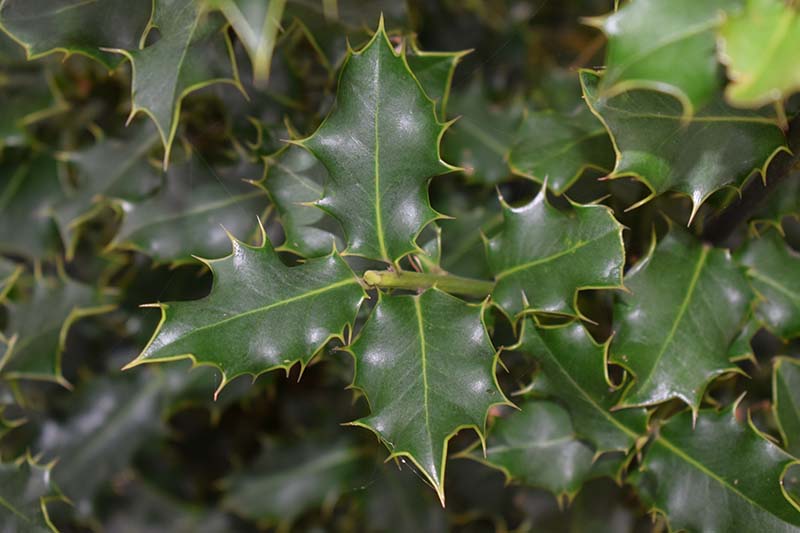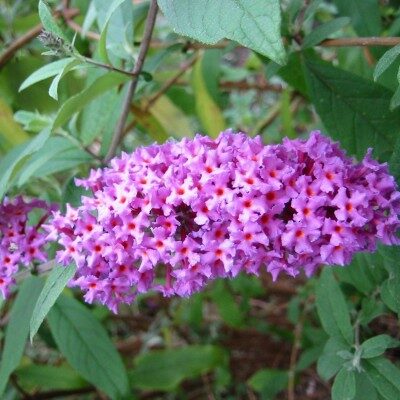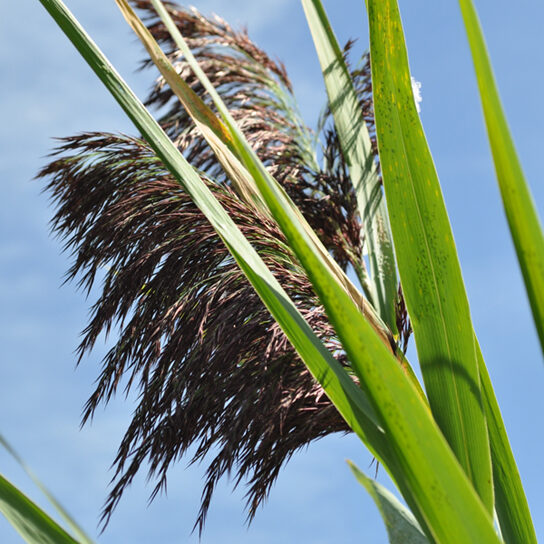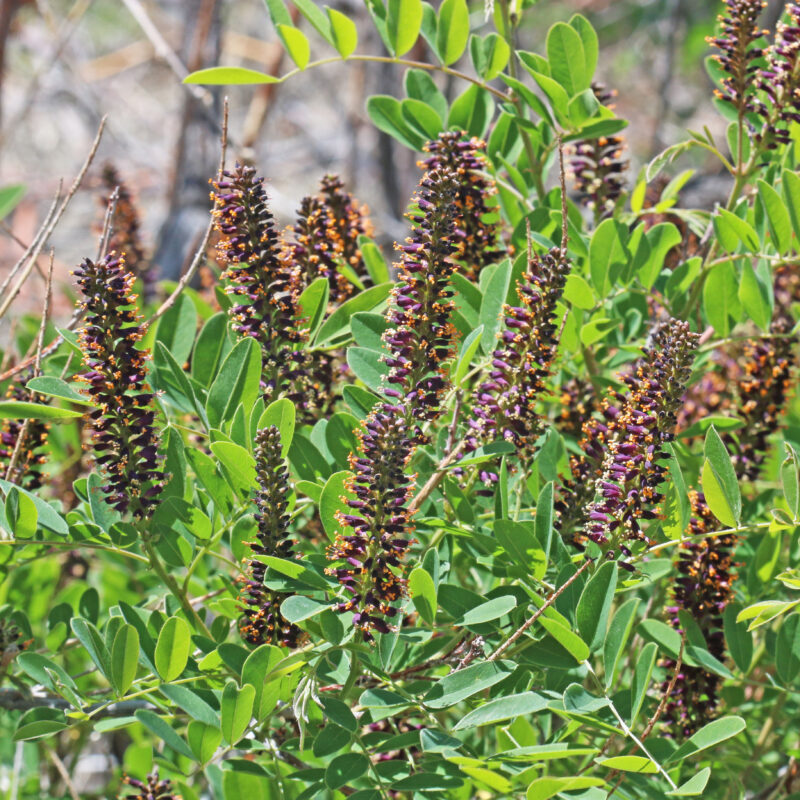
English holly is a broadleaf evergreen shrub, or small tree, that is used as an ornamental. It’s native to the British Isles and can grow up to 50′ tall and 15′ wide, either as a single trunk or a multi-stemmed thicket. The glossy dark green leaves of English holly (Ilex acquifolium) are wavy with sharp, stout spines. The flowers are small and white with a sweet smell. The female holly produces red or orange berries in the winter that are spread by birds (the berries are poisonous to humans). The plant also spreads by layering and suckering.
To control holly, which displaces native plants and shrubs in forest understoryUnderstory The area under and around trees, pull up small plants when the soil is moist. Larger plants can also be removed with a weed wrench. Mature trees have extensive root systems. The best way to remove mature trees is to cut the trees off at ground level and keep cutting off any suckers.
Some native plant alternatives to English holly are:
- Pacific wax myrtle
- Tall Oregon grape
- Red elderberry
- Hairy manzanita
- Toyon



